ViewSonic XG2530 240Hz FreeSync Monitor Review
Why you can trust Tom's Hardware
Grayscale, Gamma & Color
Once we figured out the XG2530’s somewhat-confusing OSD, it was a simple matter to dial in an excellent image. It performs well out of the box and will satisfy most users without calibration, but there is upward potential here that is worth tapping.
Grayscale Tracking
Our grayscale and gamma tests are described in detail here.

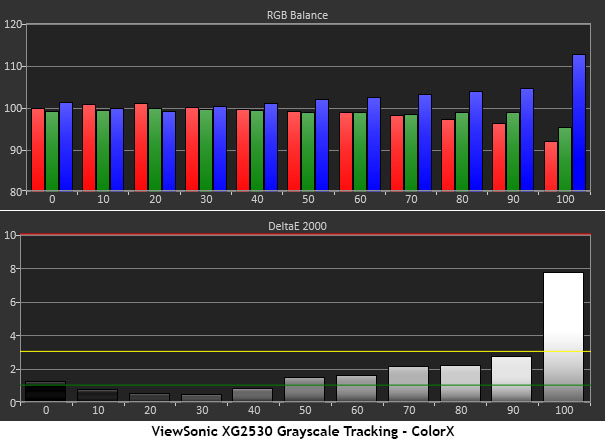


If you do nothing but turn the XG2530 on, it spits out a decent grayscale. In fact, only a too-high contrast setting mars an otherwise perfect chart. You’ll have to engage a game mode in order to access any picture controls.
Our recommendation for the best fire-and-forget preset is ColorX. It is too blue at 100% brightness but otherwise has no visible grayscale errors. And that clipping problem can be fixed by lowering the contrast slider to 60.
To unlock all adjustments, choose Custom. Once you do this, you’ll have to change the gamma preset, but grayscale measures well with all errors under 3dE. Calibration improves this number a bit, but that last 1% is more to satisfy our interest than anything else.
Comparisons
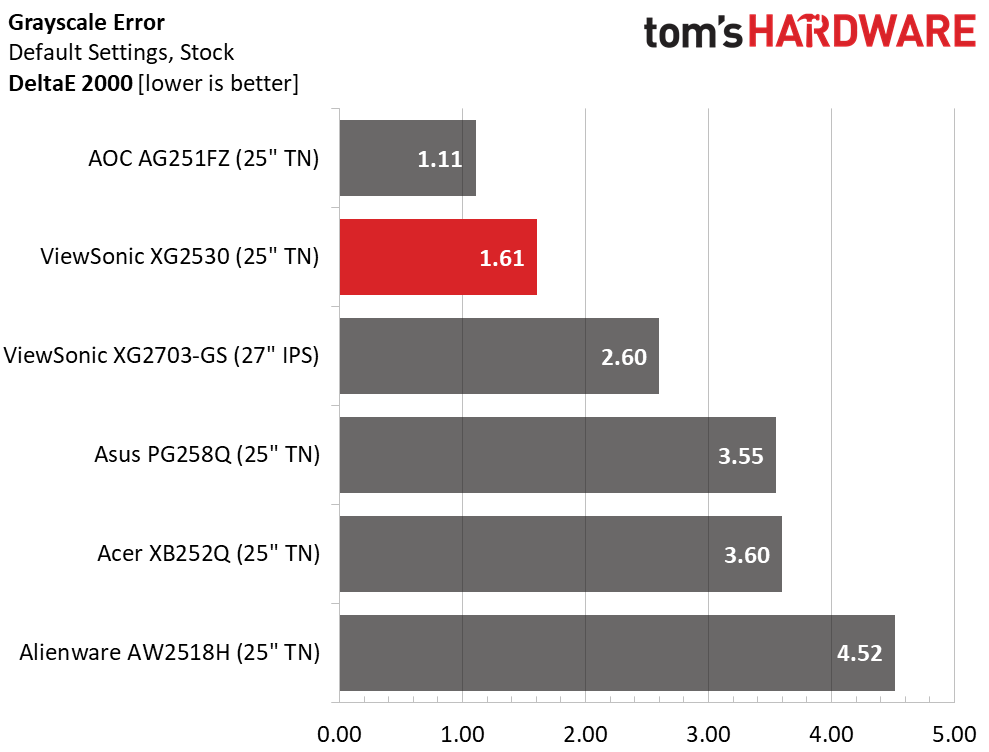

With no changes to the OSD, grayscale tracking is an excellent 1.61dE. This is better than many high-end screens in their uncalibrated state. ColorX increases the error slightly to 2.06dE, and Custom 1 took it back down to 1.34dE—a very low default number. Our tweaks to the RGB sliders made the final result .92dE, which vaulted the XG2530 to the top of the group. Obviously, grayscale tracking is fine regardless of how you wish to set up this display. The real gains are found below in the gamma and color charts.
Gamma Response
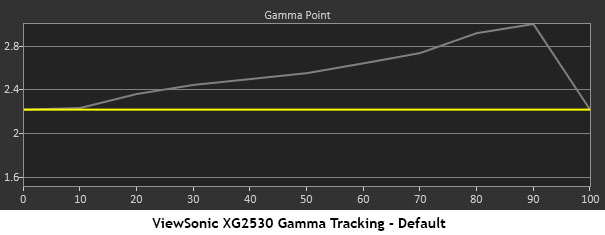
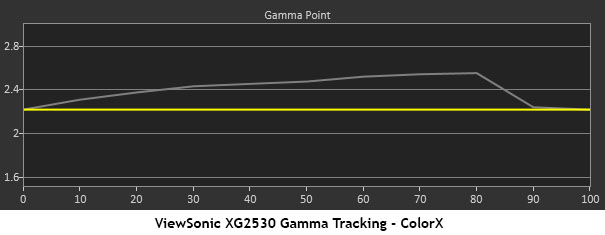
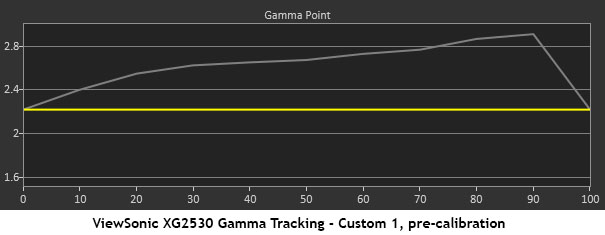
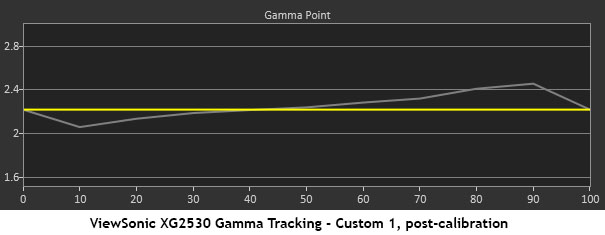
None of the gamma charts we generated had a truly flat result. By default, the luminance rises too slowly and makes bright highlights a bit murky. It’s important to get this right, especially when a panel has relatively low contrast like the XG2530. ColorX offers a slight improvement but gamma presets are locked out in that mode so you have to take what you get.
Get Tom's Hardware's best news and in-depth reviews, straight to your inbox.
Choosing Custom starts the preset at 2.4, which is much too high. Selecting 2.0 is the best choice by far. You won’t lose any shadow detail with that slight dip at 10%, and highlights are nice and bright despite that hump at 80 and 90%. While this isn’t the best gamma performance we’ve seen, it is adequate when the proper settings are made.
Comparisons
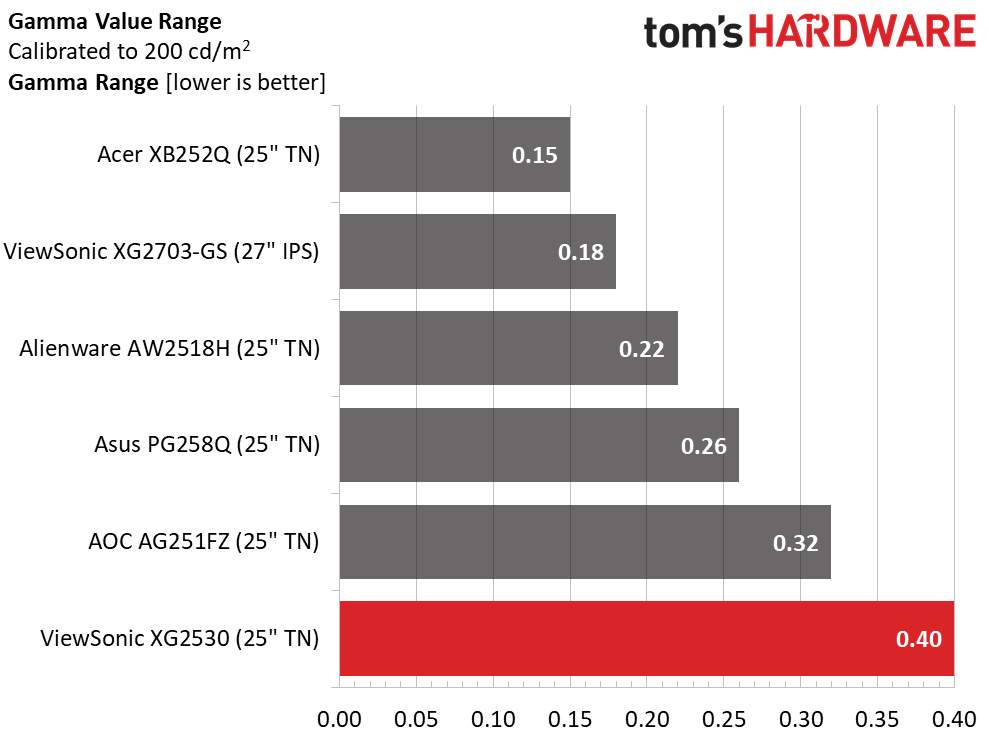

The aberrations in the XG2530’s gamma tracking are clear with its .40 range of values. It’s not a tremendous issue, but it’s enough to put it in last place. Gamma is something we find varies widely in computer monitors, regardless of technology or price. We will continue to stress its importance however, because it significantly affects color saturation tracking, which we’ll show you now.
Color Gamut & Luminance
For details on our color gamut testing and volume calculations, please click here.


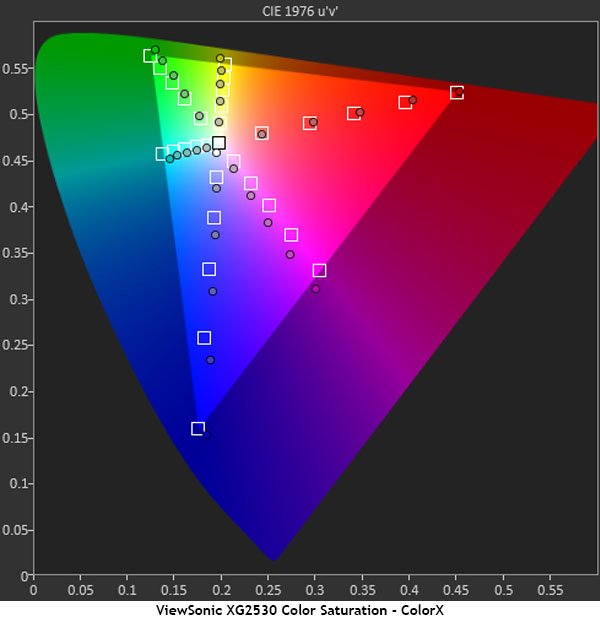


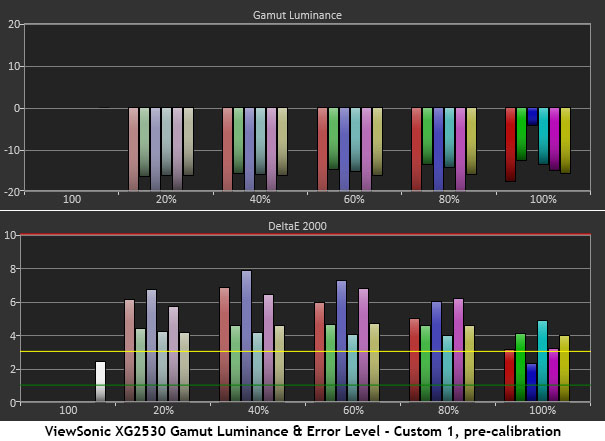
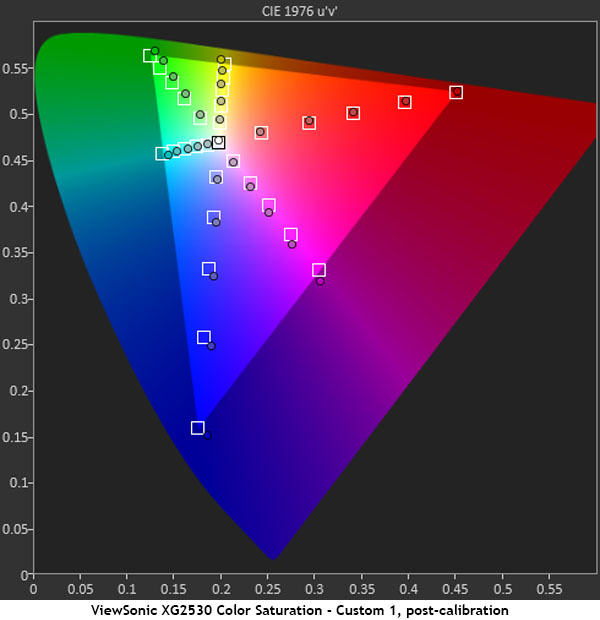

Beginning with the default mode, we see a decent CIE chart with good tracking for red, yellow, green, and cyan. Blue and magenta are a little over but not appreciably. What’s more concerning is the luminance chart, which shows lowered values across the board. That is a visible issue that results in drab color and poorly rendered detail. Overall errors aren’t high but the XG2530 is capable of better.
ColorX offers much the same performance in the gamut test but has slightly better luminance in the secondary colors. The visual difference is small but it is there.
Custom 1’s pre-calibration CIE chart shows over-saturation in every color due to the incorrect gamma setting. 2.4 is not a good starting point for this monitor. That also brings luminance levels down to the point where overall errors are all visible.
After calibration, we see just what the XG2530 can do. Every color is either inside of or in contact with its target box. The over-saturation in blue and magenta has been fixed and luminance levels are near neutral. Errors are now all under the 3dE mark. This is excellent performance that’s mostly due to the change in gamma preset. 2.0 is definitely the right choice.
Comparisons


ViewSonic takes the top two spots for color accuracy after calibration. While the XG2530 takes a bit of effort to optimize, it’s well worth your time to get it right. Speed may be its ultimate goal but when that kind of image quality is available, one should take advantage. Since all five TN displays use the same panel part, it’s not a stretch to say that ViewSonic has a slight advantage in the color department.
Gamut volume just misses 100% sRGB thanks to slight hue errors in green and blue that serve to shrink the triangle from that side. It’s not an error you’ll easily spot, and it doesn’t concern us in the least.
MORE: Best Gaming Monitors
MORE: Best Professional Monitors
MORE: How We Test Monitors
MORE: How To Choose A Monitor
MORE: All Monitor Content
Current page: Grayscale, Gamma & Color
Prev Page Brightness & Contrast Next Page Viewing Angles, Uniformity, Response & Lag
Christian Eberle is a Contributing Editor for Tom's Hardware US. He's a veteran reviewer of A/V equipment, specializing in monitors. Christian began his obsession with tech when he built his first PC in 1991, a 286 running DOS 3.0 at a blazing 12MHz. In 2006, he undertook training from the Imaging Science Foundation in video calibration and testing and thus started a passion for precise imaging that persists to this day. He is also a professional musician with a degree from the New England Conservatory as a classical bassoonist which he used to good effect as a performer with the West Point Army Band from 1987 to 2013. He enjoys watching movies and listening to high-end audio in his custom-built home theater and can be seen riding trails near his home on a race-ready ICE VTX recumbent trike. Christian enjoys the endless summer in Florida where he lives with his wife and Chihuahua and plays with orchestras around the state.